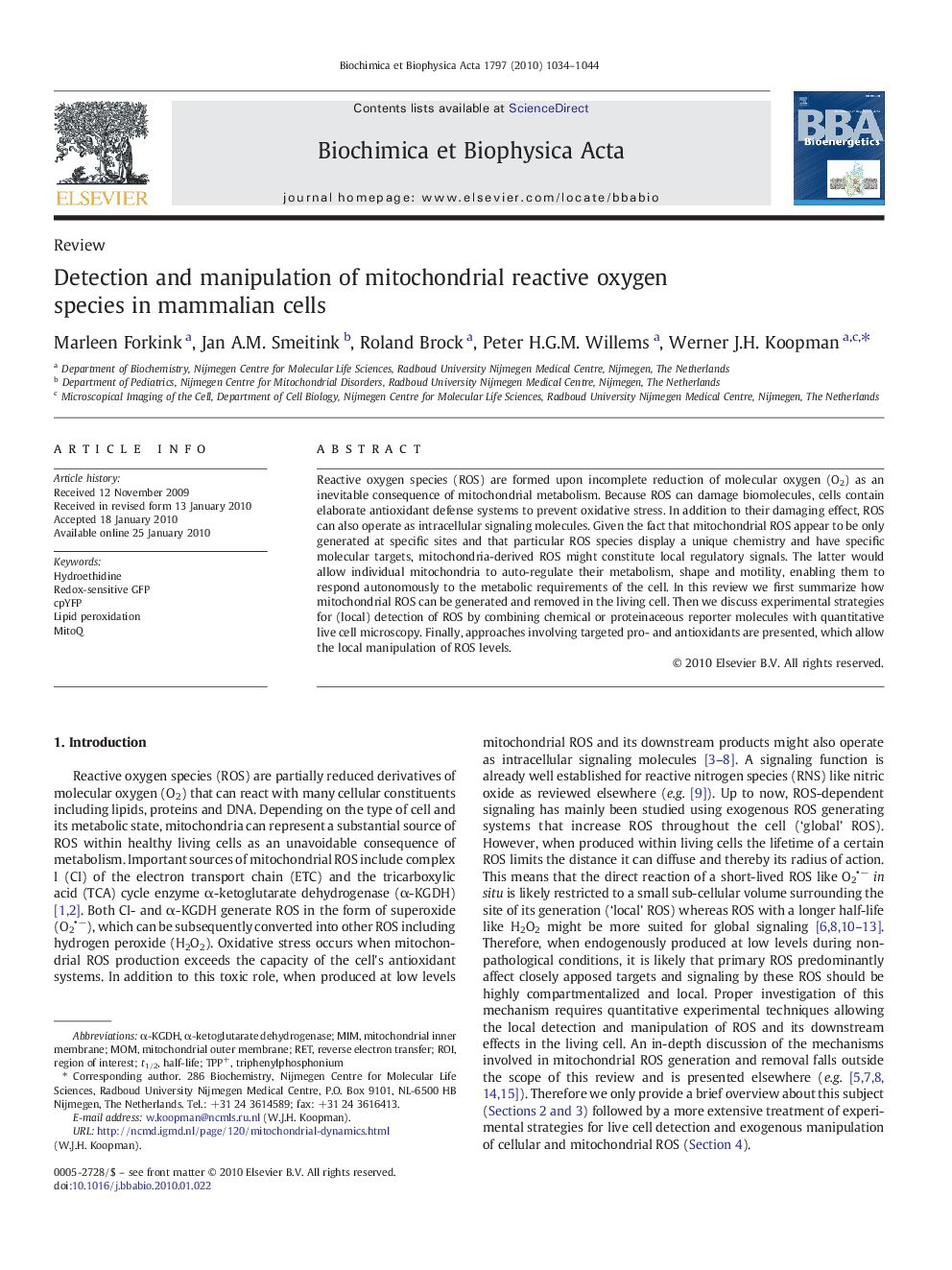| Article ID | Journal | Published Year | Pages | File Type |
|---|---|---|---|---|
| 8298952 | Biochimica et Biophysica Acta (BBA) - Bioenergetics | 2010 | 11 Pages |
Abstract
Reactive oxygen species (ROS) are formed upon incomplete reduction of molecular oxygen (O2) as an inevitable consequence of mitochondrial metabolism. Because ROS can damage biomolecules, cells contain elaborate antioxidant defense systems to prevent oxidative stress. In addition to their damaging effect, ROS can also operate as intracellular signaling molecules. Given the fact that mitochondrial ROS appear to be only generated at specific sites and that particular ROS species display a unique chemistry and have specific molecular targets, mitochondria-derived ROS might constitute local regulatory signals. The latter would allow individual mitochondria to auto-regulate their metabolism, shape and motility, enabling them to respond autonomously to the metabolic requirements of the cell. In this review we first summarize how mitochondrial ROS can be generated and removed in the living cell. Then we discuss experimental strategies for (local) detection of ROS by combining chemical or proteinaceous reporter molecules with quantitative live cell microscopy. Finally, approaches involving targeted pro- and antioxidants are presented, which allow the local manipulation of ROS levels.
Keywords
Related Topics
Life Sciences
Agricultural and Biological Sciences
Plant Science
Authors
Marleen Forkink, Jan A.M. Smeitink, Roland Brock, Peter H.G.M. Willems, Werner J.H. Koopman,
